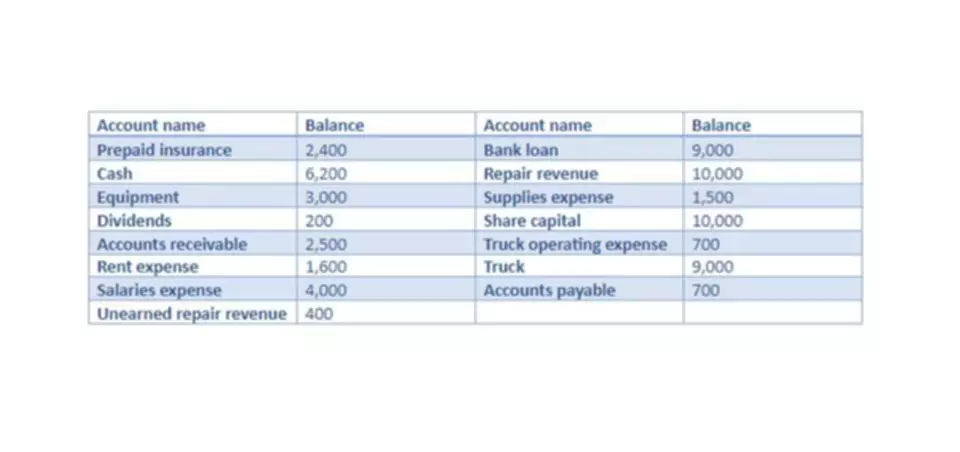Content
- Is It Fair to Blame Fair Value Accounting for the Financial Crisis?
- There is a lot of confusion about what the term “Mark-to-Market” really means, as well as when and how it is used.
- Mark-to-market accounting use by Enron
- Mark to Market Accounting, How It Works, and Its Pros and Cons
- Making Sense of Mark to Market

Investors and corporate executives don’t agree on how to value distressed assets. Now that we have mark-to-market accounting explained, let’s dive deeper into this concept. Attach to your tax return a statement, using the same format as line 10, showing the details of each transaction . To make the mark-to-market election for 2022, you must have filed an election statement no later than the due date for your 2021 return .
These are debt or equity securities that an investor buys but intends to sell before the securities reach maturity. In this case, the company will need to mark down the value of its accounts receivables by using a contra asset account. From equities, fixed income to derivatives, the CMSA certification bridges the gap from where you are now to where you want to be — a world-class capital markets analyst. Given that the farmer holds a short position in the rice futures, when there is a fall in the value of the contract, an increase to the account is witnessed. Similarly, if there is an increase in the value of the futures, there will be a resultant decrease in his account.
Is It Fair to Blame Fair Value Accounting for the Financial Crisis?
This is where mark-to-market accounting comes in to, well, account for those fluctuations and provide a more accurate picture of an organization’s financial situation. TradeLog was designed to meet the tax needs of active traders in securities who have elected or are about to elect the mark to market accounting method, or who trade section 1256 contracts.
The Act affected mark to market by forcing companies to implement stricter accounting standards. The stricter standards included more explicit financial reporting, stronger internal controls to prevent and identify fraud, and auditor independence. In addition, the Public Company Accounting Oversight Board was created by the Securities and Exchange Commission for the purpose of overseeing audits. The Sarbanes-Oxley Act also implemented harsher penalties for fraud, such as enhanced prison sentences and fines for committing fraud. Although the law was created to restore investor confidence, the cost of implementing the regulations caused many companies to avoid registering on stock exchanges in the United States. Fair value accounting has been a part of Generally Accepted Accounting Principles in the United States since the early 1990s, and is now regarded as the “gold standard” in some circles.[which?
There is a lot of confusion about what the term “Mark-to-Market” really means, as well as when and how it is used.
Criminal investigations ensued when it was discovered that accounting firms were literally shredding financial statements to conceal them from the SEC. The end effect of the Enron scandal was to bring into question the accounting practices of many financial institutions. A bank or investing firm with a portfolio of what is mark to market accounting investments, like tradable securities, may see its net worth drop precipitously as the companies it has invested in are failing. In reality, the picture of bank assets may not be as bleak, but the perception of depreciation may lead the institution to sell off their assets in order to increase their cash reserves.
What Are Mark to Market Losses?
Mark-to-market losses are paper losses generated through an accounting entry rather than the actual sale of a security.Mark-to-market losses occur when financial instruments held are valued at the current market value, which is lower than the price paid to acquire them.
Asset ClassificationAsset classification is a systematic process of assigning the assets to their respective class or group. Such grouping of the assets is done based on the common characteristics possessed by them. Like current assets and fixed assets are categorized as per the duration the company holds these assets.
Mark-to-market accounting use by Enron
As mentioned, mark-to-market accounting provides a realistic financial picture, especially for businesses in the financial industry. In fact, some financial pundits believe the Savings and Loans Crisis of 1989 could have been avoided entirely if banks and lending institutions used the mark-to-market accounting method instead of historical cost accounting. Banks were listing the original price they paid for assets and only made changes on the books when those assets were sold.
RT @adelmanzzz: i hate accounting what is mark to market whats all this formula shit omg
— Tatianna Pierre (@TatiP318) July 6, 2012
For exchange traded derivatives, if one of the counterparties defaults in this periodic exchange, that counterparty’s account is immediately closed by the exchange and the clearing house is substituted for that counterparty’s account. Marking-to-market virtually eliminates credit risk, but it requires the use of monitoring systems that usually only large institutions can afford. This can create problems in the following period when the “mark-to-market” is reversed. If the market price has changed between the ending period (12/31/prior year) and the opening market price of the following year (1/1/current year), then there is an accrual variance that must be taken into account. Mutual funds are also marked to market on a daily basis at the market close so that investors have a better idea of the fund’s net asset value .
For example, homeowner’s insurance will list a replacement cost for the value of your home if there were ever a need to rebuild your home from scratch. This usually differs from the price you originally paid for your home, which is its historical cost to you.
- During financial crises, when the market is volatile, this method tends to be less accurate.
- However, financial executives are concerned that some assets now in this category will be shifted into the trading category.
- Profit and loss are calculated between the long and short positions.
- In contrast, other accounts will still reflect historical costs, meaning the assets’ original purchase price.
- As per this principle, accountants are expected to be cautious while recognizing gains.
Some executives blame marking to market, which is generally advocated by investors, for the financial meltdown. The exchange marks traders’ accounts daily to match the market value by settling the gains and losses resulting from fluctuations in the security’s value. If, for instance, the futures contract drops in value on day two, the long margin account will be decreased while the short margin account will increase to reflect the new value. In the opposite situation, the margin account of the long position holder will be increased while the short futures account will be decreased. This method in corporate accounting recognizes the gains and losses in the year they occur by adjusting pension plans with fair value.
Marking to Market (Financial Derivatives)
This can occur when a company is forced to calculate the selling price of its assets or liabilities during unfavorable or volatile times, as during a financial crisis. In futures trading, accounts in a futures contract are marked to market on a daily basis. Profit and loss are calculated between the long and short positions. In addition to accounting for interest rate risk with market value accounting of the investment portfolio, interest rate risk will soon be incorporated into banks’ risk-based capital requirements. Generally Accepted Accounting Principles require companies to record certain assets at their fair market value. The practice of recording these values is referred to as mark-to-market. The process was developed so assets appearing on a company’s balance sheet reflected their true value, which can materially differ from historical cost.

But for assets with a lower degree of liquidity, such as inventory, business equipment, or real estate, obtaining the current value of the asset can be more difficult and require the services of an appraiser. In some cases , the IRS has laid out rules around how much an asset can depreciate, so guesswork or assessment is taken out of the picture. The term mark to market refers to a method under which the fair values of accounts that are subject to periodic fluctuations can be measured, i.e., assets and liabilities. The goal is to provide time to time appraisals of the current financial situation of a company or institution. It is done while keeping in mind the prevailing market conditions. The most infamous use of mark-to-market in this way was the Enron scandal. The problem with full MVA is that most bank assets are difficult to measure at market value.
